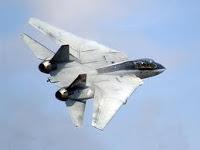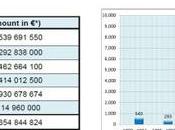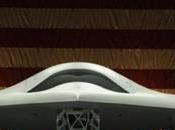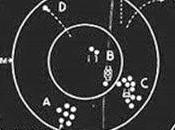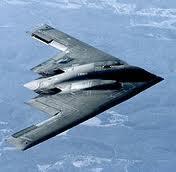
Il Northrop Grumman B2 Spirit
Nel 1989, il bombardiere americano B2 fece diventare realtà il concetto di ala volante. Prima di allora avevano volato solo prototipi, e nessun mezzo realmente adatto all'uso quotidiano, qualunque fosse il suo scopo o applicazione. L'ala volante è un'idea, un concetto, che in aviazione piace per tanti motivi, ma che ha dei problemi tecnici non indifferenti... ovvero la sua efficacia durante il volo, a seconda che si viaggi a velocità supersonica, o a velocità sub-sonica. Difatti il B2 è un velivolo subsonico.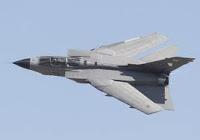
Un Panavia Tornado
Per rendere bene l'idea del problema anche a chi non si occupa di aviazione potrei mostrare diversi velivoli, ma ve ne cito due abbastanza famosi, ovvero l'F14 Tomcat, e il Panavia Tornado, che hanno risolto la questione con una soluzione d'ala a geometria variabile. In pratica, il computer a bordo del velivolo regola l'apertura alare del mezzo a seconda delle condizioni di volo in cui esso si trova, ampliandola o restringendola a seconda di velocità e tipo di manovra che esso esegue (più l'aereo va piano, più le sue ali devono avere portanza, ovvero superficie "d'appoggio" per l'aria che lo deve sostenere).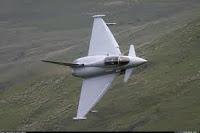
L'Eurofighter Typhoon
Altri sistemi utilizzati oggi giorno per ottenere maggiore stabilità nelle varie fasi di volo, a seconda della velocità, è quella delle alette canard poste sul muso del velivolo, come avviene nell'Eurofighter Typhoon.Attualmente, però, la NASA ha deciso di finanziare un progetto di ala volante davvero entusiasmante... Si tratta di un ala volante di nuova generazione, strutturato come una sorta di stella Ninja, e capace di cambiare conformazione, ruotando su sé stessa di 90 gradi, così da adattarsi, a seconda del caso, alla velocità di crociera decisa dal pilota. La "stella" non ha, difatti, le quattro punte lunghe uguali, ciò consente di sfruttare i due lati più lunghi quando il velivolo è in volo subsonico, e quelli più corti quando è in volo supersonico. I motori posti al di sopra della struttura consentono la rotazione in volo senza che il velivolo rischi di perdere la stabilità.
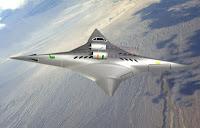
Supersonic Flying Wing Concept
Ovviamente il progetto è ancora in fase di studio, e ci vorranno anni, o forse decenni, prima che possa divenire realtà, ma le prospettive sono davvero interessanti, anche in ambito civile, perché potrebbero ridurre di diverse ore i voli transcontinentali, e risparmiare carburante... per la gioia dei passeggeri... senza dover impattare sul costo del biglietto, come invece accadeva con il mitico (o in un qualche modo famigerato) Concorde.In 1989, the American bomber B2 made real the concept of flying wing. Before that it had flown only prototypes, and no means really suitable for everyday use, whatever its purpose or application. The flying wing is an idea, a concept, liked in aviation for many reasons, but that have technical problems not indifferent ... as its effectiveness during the flight, depending on whether you travel at supersonic speed, or sub-sonic speed. In fact, the B2 is a subsonic aircraft.
The Grumman F14 Tomcat
To give a good idea of the problem to those who do not live of bread and wings I might show different aviation aircraft as example, but I quote two rather famous, the F14 Tomcat and the Panavia Tornado, which have solved the issue using variable geometry wings.In practice, the computer on board of the aircraft adjusts the wingspan depending on the flight conditions of the plane, enlarging or restricting it because of the speed and type of maneuver that it performs (more the plane goes slow, plus its wings must have lift, or surface that make the plane sustained by air). Other systems used nowadays to get greater stability in the various phases of flight, depending on the speed, are the canard wings placed on the nose of the aircraft, as is the case nell' Eurofighter Typhoon.
But... At present, the NASA decided to fund a project of flying wing really exciting ... It is a flying wing of new generation, structured as a sort of star Ninja Star, and capable of changing shape, turning on itself through 90 degrees, so as to adapt, depending on the case, to the cruise speed determined by the pilot. The "star" has not, ad the matter of the fact, the four points equally long, this allows to exploit the two longer sides when the airplane is in subsonic flight, and those shorter when it is in supersonic flight. The motors placed above the structure allow rotation in the airplane flight without risk of losing the stability.
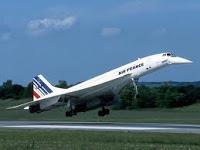
L'Aérospatiale BAC Concorde
Of course, the project is still under study, and it will take years, perhaps decades, before it can become a reality, but the prospects are really interesting, even in the civil, because they may reduce of several hours the transcontinental flights, and also save fuel, ... to the delight of passengers ... without having an impact on the cost of the ticket, as was the case with the legendary (or perhaps in a some way infamous) Concorde.
